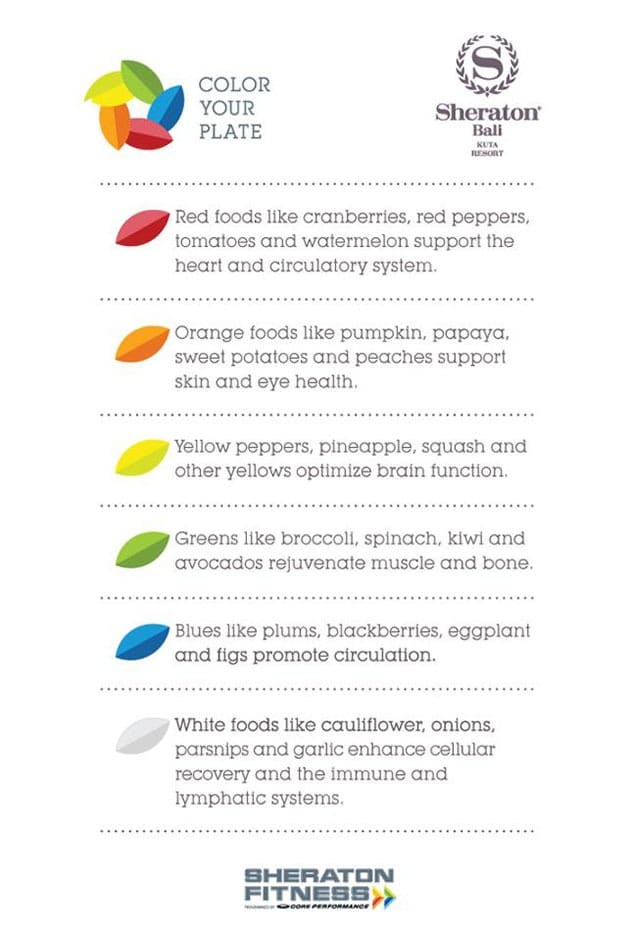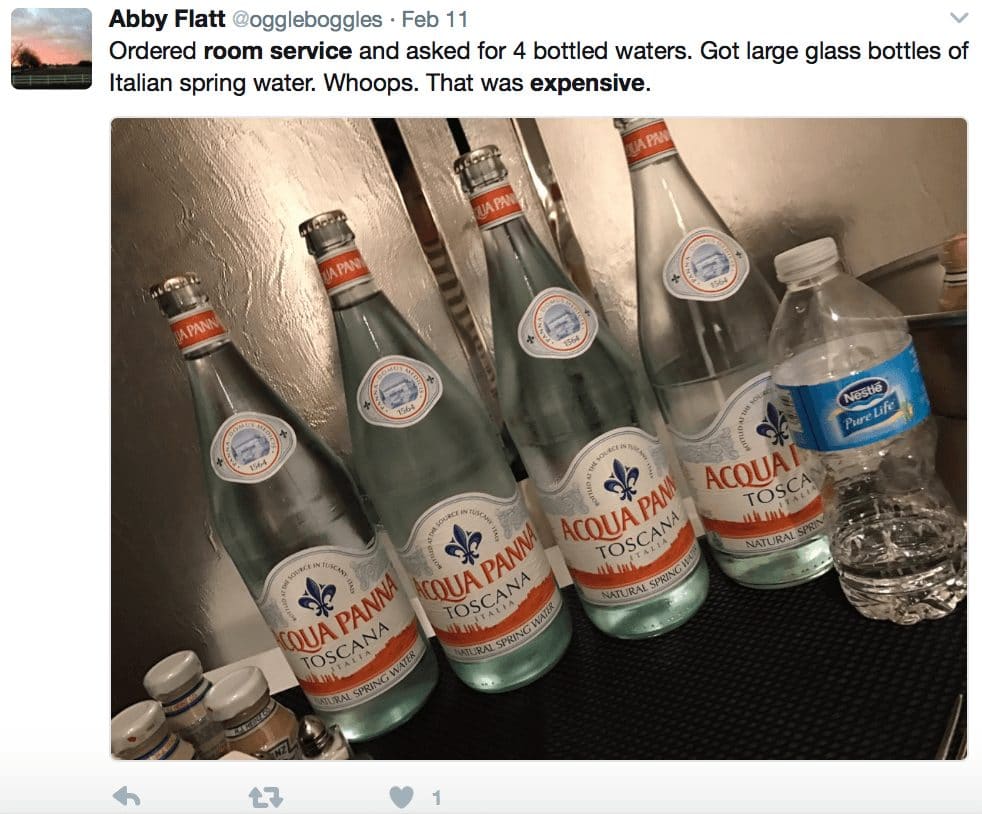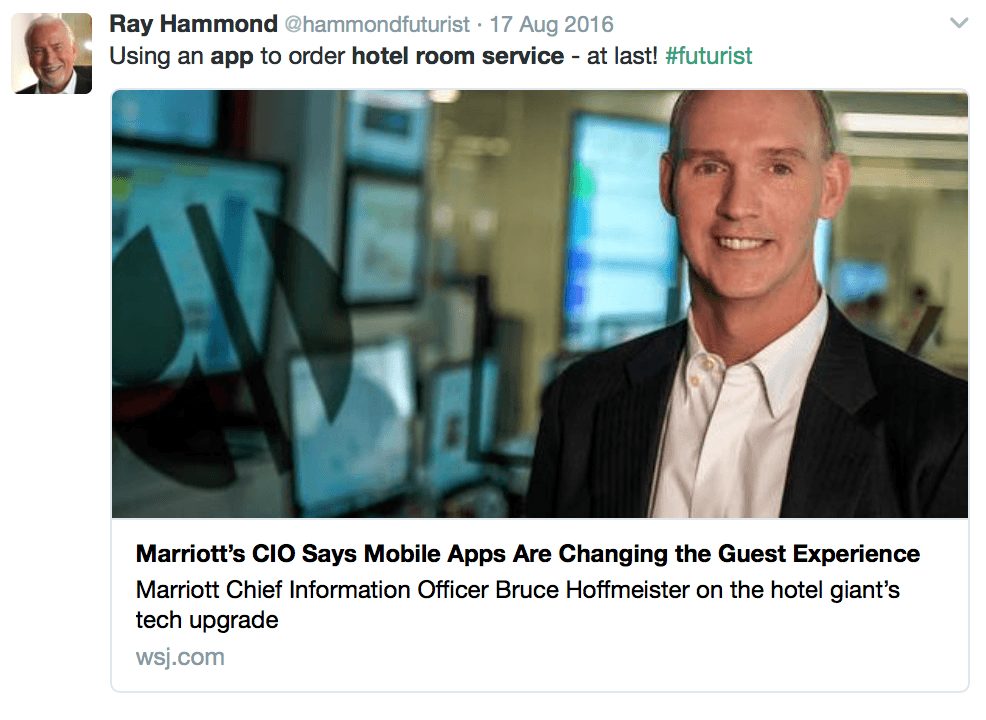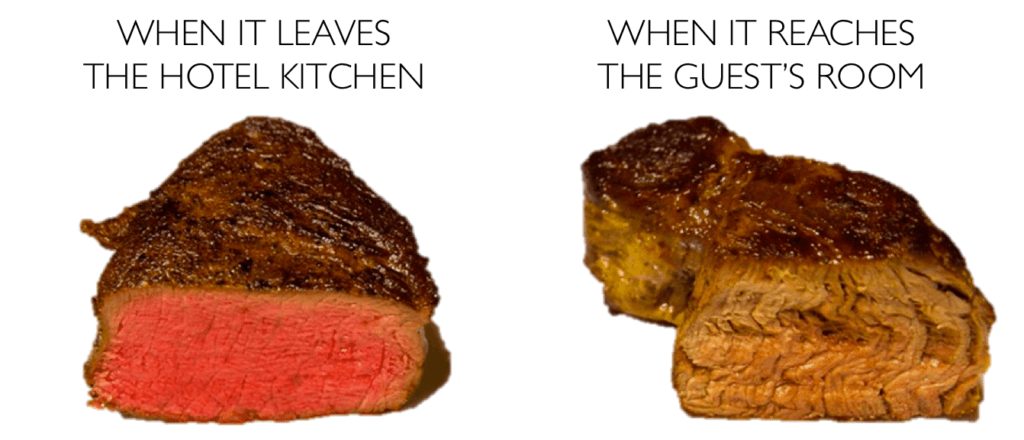Hotel F&B is being reshaped by powerful forces. In 2016 alone, 18% of business travelers used Airbnb — a number that’s expected to rise to 23% in 2017. With the sharing economy so dramatically altering the industry, being on the cusp of trends (and offering amenities that a rented house or apartment can’t) is crucial.
Food and beverage revenue is growing in importance to overall hotel profitability, a break from times past when it was considered a loss leader. But the average hotel doesn’t pay much attention to cutting-edge trends in either in-room or on-site dining. Most can do a better job of feeding both guests and the bottom line.
Some savvy companies are responding — though, similar to some pockets of the restaurant world, many seem to be lagging behind. The companies that can focus on improving common problem areas, like those below, will be light years ahead of the game. But those who can take it a step further — implementing tech, mirroring the trends seen throughout the restaurant industry at large — will lead the pack.
Below, some of the most common hotel food and beverage mistakes.
1. NO SENSE OF SEASON OR SENSE OF PLACE FOR HOTEL FOOD & BEVERAGE
The local, seasonal movement took off in the restaurant world some time ago; a full 21% of U.S. diners now say they are willing to pay more for local food and drinks, and 41% of consumers say “locally-sourced ingredients” influence their dining choices. Plus, one of the best parts of traveling to a new city is experiencing the regional cuisine. Still, many hotel F&B concepts lack a sense of local flavor — failing to offer items that are unique to the location or relevant to the season.
Eighty percent of restaurant operators say that guests are interested in locally sourced items, so capitalizing on that trend is an easy win. Labeling the local suppliers on the menu is an excellent way to convey a commitment to local food traditions; so is showcasing those notable local items: biryanis, lumpia, croissant, deep-dish pizzas or regional barbecue, artisan cheeses.
And don’t forget the locally roasted coffees, craft beers, ciders and wines. Look at any list of “best bars” and you’ll find themes: an outrageous selection of tequilas, bourbons or vodkas, beer cocktails, barrel-aged cocktails, pre-Prohibition recipes, whiskey tastings, wine flights. A hotel bar can compete by picking a theme and owning it, especially if it’s one that will resonate with its audience.
Even culinary and cultural traditions — like an English tea service, the famous Peabody ducks, Arabic coffee service — convey a sense of regional pride and uniqueness that guests aren’t likely to find elsewhere.
2. FEW OR POOR HOTEL FOOD AND BEVERAGE OPTIONS FOR GUESTS ON SPECIAL DIETS
Eating with some type of food restriction is quickly becoming the norm, with more consumers identifying themselves by their food preferences: paleo, gluten-free, low-carb, vegetarian, organic, raw, nut allergies, and so on. Food allergies affect more than 15 million Americans alone — and even those without allergies are eating in new ways. In 2014, “gluten-free diet” was the third top diet search on Google, just behind Paleo and Atkins.
It’s difficult to make everyone happy, but the typical restaurant customer today is accustomed to choices. If a menu doesn’t address at least some of those preferences, it’s likely to turn diners off and seem dated.
And it’s not enough simply to add dishes that appeal to these groups. They need to be clearly but subtly labeled. If the kitchen is willing to adapt dishes to accommodate diners (which should be a given in this day and age), the menu should make note of that.
Some hotel chains have gotten this right in recent years. Sheraton’s Color Your Plate campaign encouraged guests to add three colors from fruit and vegetables to their plate, to help increase energy (and keep in shape) while traveling. The program educated Sheraton guests about the importance of a healthy lifestyle and included menu items with that represented an ideal dietary balance.
3. HOTEL F&B MISTAKE: NO WI-FI
A recent Cornell study found that free in-room Wi-Fi is the one of the top five factors travelers considered when choosing a hotel. Patrons, particularly if they are dining alone or away from home as is most likely the case in a hotel restaurant, want to use their phones, laptops and tablets to get work done, clear out their inboxes, or catch up with friends and family. Wi-Fi is no longer a “nice to have,” it’s a must. And while this may seem obvious, there are still many hotels that don’t offer free, in-room or on-property Wi-Fi.
In fact, many chains are aiming to go above and beyond in-room wi-fi, testing voice-activated technology that will allow guests to turn on lights, change television channels, and perhaps even place an order for room service. With 20% of search queries on Google’s mobile app and on Android devises now comprised of voice searches, it’s a smart move for companies to be on the forefront.
Marriott International is testing both Amazon’s Alexa-powered Echo device, as well as Apple’s Siri, while Wynn Resorts became the first hotel chain to install in-room Echos in December. In Las Vegas’ Cosmopolitan, guests can text with Rose, a chatbot who can offer cocktail recommendations or describe the ambience at local restaurants.
4. A STATIC HOTEL F&B MENU
With so many off-property options competing for guests’ food dollars, on-site restaurants can’t afford to stagnate. Yet so many menus give the impression that the chef hasn’t learned any new tricks in a decade or two. That’s a recipe for irrelevance.
A restaurant in a trendy, stylish hotel needs to offer equally relevant cuisine, not just “me-too” fare. But even a restaurant in a mass-market hotel can show signs of life by staying on top of food fads as they move into the mainstream—offering alternatives to dairy milk, varied protein portion options, more superfoods, gluten-free dishes, craft beers, handcrafted cocktails, and small plates.
There are a select few who have responded to culinary trends. The Four Seasons Hotel in Chicago has an on-site mixologist who can be summoned to guest rooms to craft a cocktail to their liking. For those interested in something sweeter, the hotel also offers an ice cream man that will make sundaes to order. The Soho House chain of hotels provides a similar offer — a bartender who pushes a cocktail cart nightly to make pre-dinner drinks.
5. POORLY DESIGNED, OVERPRICED ROOM SERVICE
Thumb through the average room service menu and you’re likely to find the usual timeworn suspects — the club sandwich, the burger, the overpriced breakfast, lots of booze — along with premium prices and, to top it off, a usually hefty service charge. When it comes to pricing, it seems there’s no rhyme or reason to what a hotel will charge. Data from TripAdvisor found that room service costs vary wildly throughout the country. In New York City, a club sandwich costs $24.20, while in Denver, just $11.70. The average bottle of water in Los Angeles is an astounding $6.80, while a pack of peanuts in Boston will set hotel guests back some $13. It’s probably unsurprising, then, that nearly 40% of travelers in 2014 said they’d ordered room service while only 13% had visited the mini bar.
Not only do prices vary widely from city to city, but they can occasionally vacillate within the hotel itself. Often, a hotel’s room service menu features many of the same items as the hotel restaurant — albeit at much higher prices. While of course hotel operators see the upside — upping prices can positively impact the bottom line — it may actually be doing more harm than good in terms of profitability, because guests feel cheated. Plus, this detracts from not just hotel food and beverage, but the overall guest experience and perception of the hotel brand.
A hotel that can produce a high-quality, thoughtful menu at a price point that matches the situation is bound to score with guests. A hotel that fails to do that is increasingly likely to find takeout containers piled high in guestroom trash cans.
6. LOW-TECH ROOM SERVICE
The process of ordering room service in a hotel is, for 2017, rather antiquated. In the world of delivery, picking up the phone to place an order is old-school — today, many of us just use an app or order online. Some 34% of consumers say technology makes them opt for takeout or delivery more often, which is one of the many reasons standalone restaurants are investing in digital marketing and online ordering capabilities.
Hotels should take cues from the world outside their walls — in-house apps with the room service menu pre-programmed would be much more seamless for guests and employees, as it cuts down on the number of wrong orders. Plus, studies have found that guests tend to order more food (and therefore spend more) when they use an online system versus the telephone.
In 2016, Marriott announced it would begin rolling out a slew of new tech-friendly options for guests (including room service-via-app). According to CIO Bruce Hoffmeister, mobile revenue was up at the company 25% year-over-year, from 2014 to 2015, with 75% off all guests using Marriott.com to gather information about their stay. Even the iconic Hollywood Roosevelt Hotel is staying on the cusp of technology, using the ALICE software module to optimize staff communication and increase guest satisfaction. Once a guest request is entered into ALICE (complete with the guest’s location), the staff member in closest proximity can address the issue and easily let his colleagues know he’s done so.
7. LITTLE HOTEL F&B MARKETING, EITHER ON-PROPERTY OR OFF, AND A LACKLUSTER (IF ANY) WEBSITE
Many hotel managers seem to think that mounting small posters in the elevators is sufficient to fill seats in the restaurant. Sure, there’s a captive audience looking for something to focus on during the ride up and down. Maybe these passive reminders will reel in a few guests. Same with in-room table tents on the guestroom desk, a description in the hotel directory, or a video on the hotel TV channel.
Most hotel F&B websites are, at best, woefully dated. At worst, they don’t have an online presence at all, making it difficult for guests to even encounter the on-site restaurant while searching for nearby restaurants on their phones or computers. With 70% of smartphone users viewing restaurant menus on their phones, it’s increasingly imperative to have an online presence (ideally one that updates consumers on new menu items).
But few hotel restaurants can turn a profit from in-house traffic alone. Visitors are there a few days or a few times during the year. Locals could choose a reservation any time. Capturing the attention of locals creates more energy for a restaurant and potentially more frequent visits. An organized marketing effort to inspire a buzz among locals is a must.
8. A HIDDEN LOCATION (AND IMPOSSIBLE-TO-FIND HOURS OF OPERATION)
Many hotel chains view hotel F&B as a loss-leading amenity and, therefore, don’t put much effort toward it. In some cases, on-site hotel restaurants are nearly impossible to find, and put little to no effort into geo-search marketing, so guests aren’t even aware of what’s just downstairs in the lobby.
There’s no point in keeping a restaurant a secret, making it difficult to find or enclosing it; on the other hand, an open-design space that’s visible from the lobby, particularly if it’s busy, will feed business.
All too often, hotel restaurants and room service fail to make their hours available online or in the room. Even when they do, they’re often listed inaccurately. A common mistake restaurateurs (both in and out of the hotel F&B industry) make is accidentally creating the appearance that their restaurant is closed when it is not. Restaurants should be convenient and welcoming, to attract as many guests as possible.
9. POOR EXECUTION & OVERCOOKED FOOD
If it can’t be executed, don’t attempt it. That goes for you, $40 hotel room rib-eye. High cost menu items that aren’t even appropriately prepared will are not only expensive, they’re tasteless. Guests ordering a $20 glass of House Wine will be even more discouraged when they’re served a 5-ounce pour of Robert Mondavi. Do it well, or don’t do it at all.
Many hotels fail to execute a timely dining experience — which can be both a nuisance for guests and do a disservice to the meal itself. A greater emphasis on having food delivered in a timely manner (rather than taking 45 minutes to an hour for an order of scrambled eggs) would certainly resonate with guests. Plus, it would ensure the food doesn’t fall victim to steam, from being transported under covers.
When room service so often arriving cold or overcooked, it’s no wonder that some guests order takeout from the restaurant downstairs (best case scenario) or call-in for delivery. And these days, it’s much easier to get more than just pizza delivered to a hotel room from an outside restaurant.
A 12th-floor room service order for a medium-rare steak requires a different preparation than a traditional restaurant order for a medium-rare. If the hotel kitchen cooks a steak to medium-rare, it will likely be well past that by the time it arrives to room 1207, especially if its placed beneath a cloche or in a hot box for transport. Slightly undercooking meat — knowing that it will continue cooking on the ride up to the guest — isn’t necessarily something a line cook would know. Unless, of course, that education is built into a hotel F&B training program, to help address the problem at its root.
10. SLOW SERVICE
Vacationing guests have plenty of time to linger over a leisurely brunch, but business travelers and local office folks having lunch are most likely strapped for time. Offering fixed-price meals or scaled-down quick menu options is one way to manage this issue.
And while the ordering and preparation process can take 45 minutes or longer, even worse is the set-up: The wheeling in of food, an attempt to set the meal wherever there’s room, and a dramatic unveiling of each item can add to the process.
11. SOMEONE CALLING THE ROOM, JUST TO CHECK IN
Reading the table — or, in the case of hotel F&B, the room — is important. Busy or weary travelers who are enjoying room service probably don’t need to be interrupted by someone circling back with them and calling their room, just to check in. Phone calls — which almost inevitably seem to coincide with the first bite of food — are often incredibly interruptive. Hotels might now be conditioned to think this ‘service” is elevating the guest experience but to most travelers, it’s a huge inconvenience. They just want the food. If a guest needs anything additional, they’ll call.
12. IGNORING SNACKS
Guests who arrive at a hotel after the dinner hour could have been traveling all day and want something to eat, but not a full meal. And Americans are replacing meals with snacks more frequently (just one of the restaurant trends we predict will crop up more and more in 2017). In fact, recent data suggests that 94% of Americans snack at least once a day. Fifty percent of Americans snack two or three times a day.
An on-property restaurant not prepared to handle those cravings — either through room service, a robust bar snack menu or a retail offering — is not providing a hospitable experience and forgoing an opportunity to capture the attention of guests. But that doesn’t necessarily mean guests will reach for that $6 can of Pringles in the hotel mini-bar: Despite 94% of Americans snacking daily, only 13% say they visit the hotel mini-bar for a snack. Culinary trends like small plates and tapas (which fall in line with a greater occurrence of snacking) haven’t quite made their way to hotel room service menus — and could provide a great opportunity.
In other words, snacking is a culinary trend (one of many) that hotels aren’t tapping into. Anticipating a guests’ needs is something hotels do so well: providing toothbrushes or toiletries to those who need it, for example. Yet when it comes to dining, few are anticipating guest needs or trends from a culinary perspective.
13. F&B POSITIONING OUT OF STEP WITH THE HOTEL
Hotels large enough to support multiple dining outlets tend to take a shotgun approach to dining, creating spaces and menus for every taste and budget. But most hotels don’t have that latitude. They might have one or two chances to get it right. That means a dining experience that reflects what’s going on elsewhere on the property. Sometimes an upgrade in one part of a hotel (guestrooms) leaves the other part (dining areas) in the dust.
A modern, sleek and mid-priced suburban hotel, then, probably isn’t the best place for a dark, high-end steakhouse or a nostalgic diner. Clients of a classic hotel probably won’t support a casual burger place or a sports bar. And so forth. The tone should be consistent.
14. FAILING TO WARD AGAINST THE COMPETITION
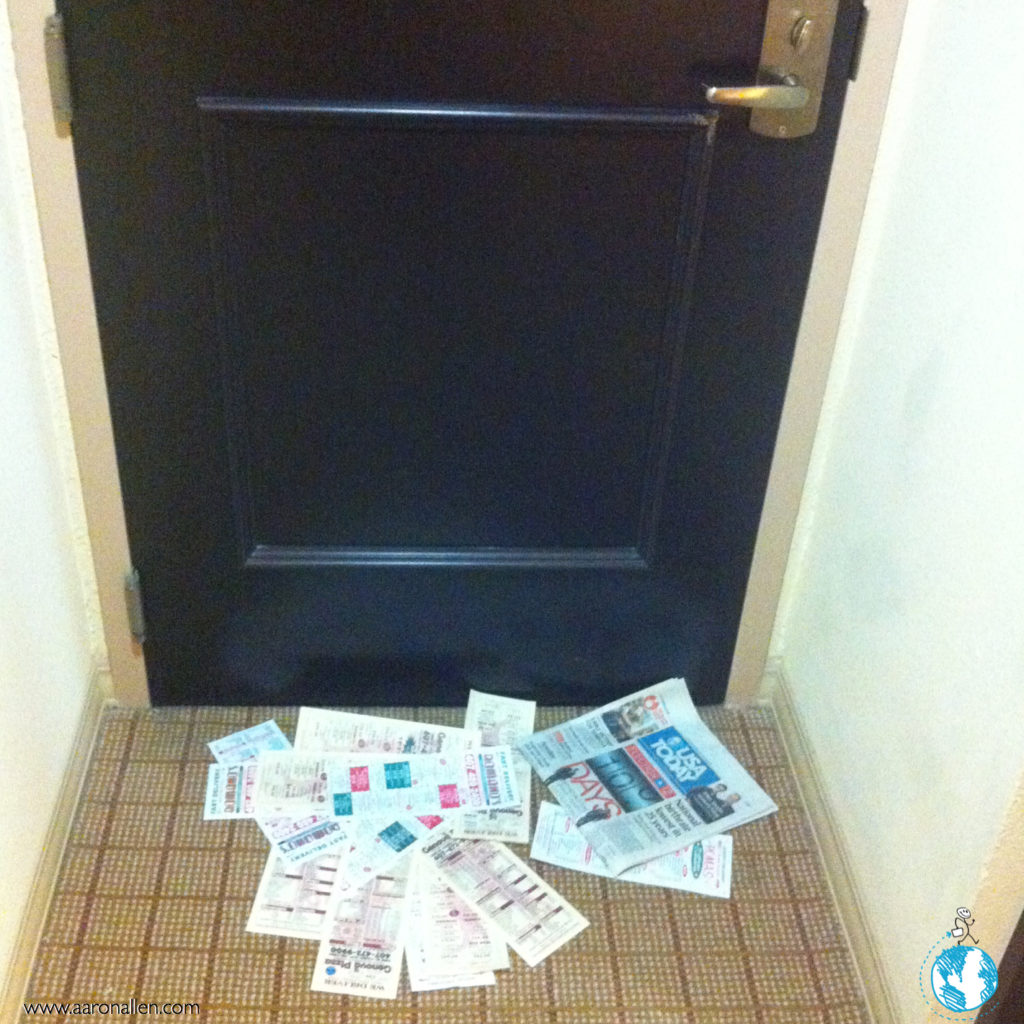
Who among us hasn’t walked into their hotel room and had to immediately navigate a pile fliers for nearby pizza parlors and other delivery options? These days, paper fliers are pretty antiquated — it’s easy enough to log on to GrubHub or UberEats and get delivery to your hotel room — and yet they all still seem to make their way to hotel rooms. What’s worse is that hotels aren’t doing much (if anything) about it.
Hotels should have control over who walks onto their property, and certainly who goes door-to-door in their hotel. A standalone restaurant wouldn’t allow a competitor to go table-to-table, luring diners away with discounts or delivery options. Likewise, hotels could pretty easily prevent the competition from advertising directly to guests.
THE OPPORTUNITIES ARE PLENTIFUL
Historically, hotels haven’t been on the cutting edge of dining options — which means there’s much opportunity in a largely untapped space. To do it successfully, though, will require evaluating the entire dining interaction, which goes much deeper than just placing an order and eating food. Everything from guest greeting to bill request and even post-purchase behavior (i.e. where a guest goes once leaving the venue) can help determine the outcome of the overall dining experience.
We’ve helped some of the world’s largest hotel chains strengthen their F&B, so we know firsthand that those industry players who can make moves away from the traditional sub-par in-room or on-site dining experience — and take a page from the traditional restaurant industry — will woo guests and locals alike.
In order to remain competitive, hotels must incorporate the latest technologies (and take into account evolving dining habits) into their F&B programs and marketing strategies. Because few have been innovative when it comes to the food and beverage offerings at hotels, there’s a unique opportunity for operators to set the benchmark — and carve out a niche in an industry that sorely needs one.
* * *
ABOUT AARON ALLEN & ASSOCIATES:
Aaron Allen & Associates is a leading global restaurant industry consultancy specializing in growth strategy, marketing, branding, commercial due diligence for emerging restaurant chains, hotel F&B programs, and prestigious private equity firms. Aaron has personally lead boots-on-the-ground assignments for leading hotels around the world, including thousands of properties and hotel F&B venues that span six continents. Collectively, our clients around the globe generate over $200 billion annually and more than 100 countries.


